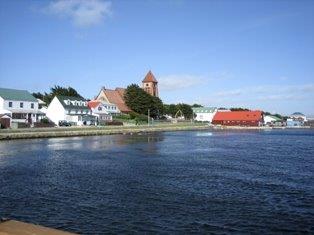This month in history: The Falklands War

In April 1982, Britain and Argentina went to war over control of the Falkland Islands, a British colony since 1833. In the 2 months of fighting that followed, 255 British and 655 Argentinean servicemen lost their lives, as did 3 Falkland islanders.
Background to the battle
In early 1982, Argentina’s military junta, led by Leopoldo Galtieri, abandoned long-running negotiations with Britain to relinquish its control of the islands, and launched an invasion. The decision to invade was chiefly political. The junta, much criticised for its economic mismanagement and human rights abuses, believed that the recovery of the islands would unite the country in a patriotic fervour.
The invasion took place on Friday 2 April, with Argentinean forces entering the capital Port Stanley early that morning. The garrison of Royal Marines was outnumbered and outgunned, and after some brief skirmishes, Governor Sir Rex Hunt ordered them to lay down their arms. Other British South Atlantic territories, including South Georgia, were also seized.
Despite US intervention at a diplomatic level, led by Secretary of State Al Haig, Galtieri refused to take his men off the island, which led to a British military response. Prime Minister Margaret Thatcher argued that the 1,800 Falklanders were "of British tradition and stock", and a task force was sent to reclaim the islands that were some 8,000 miles away from British shores.
The British response
It took the UK task force of 28,000 troops and 100 ships 3 weeks to reach the islands, where 12,000 mainly conscripted soldiers lay in wait. The first major loss of life came on 2 May with the sinking of the Argentine cruiser, General Belgrano, and the loss of 368 of its crew. Just 48 hours later a British destroyer, HMS Sheffield, was hit by an Exocet missile, and sank with the loss of 20 crew members.
These naval skirmishes were followed by the first British troop landing at St Carlos on 21 May. The plan was to launch attacks from there on Goose Green and the capital, Port Stanley.
The Battle of Goose Green lasted 1 day and 1 night, and was fiercely fought, with combined losses of 64 dead and 209 wounded. Although the British troops were outnumbered by over 300, they were better trained than the Argentinean conscripts, and were ultimately successful. Herbert Jones was posthumously awarded the Victoria Cross for his actions as a commanding officer.
Victory at Goose Green meant that British forces were clear to break out of San Carlos and begin the long march east towards Stanley. Carrying 120lb packs on their backs, the troops fought their way across the peat bogs of East Falkland, before mounting their final attack on the last line of Argentinean defence, the high ground around Stanley.
It was for his actions during the assault on Mount Longon, during the battle for Port Stanley, that Ian McKay was posthumously awarded the Victoria Cross (Gazette issue 49134). With their defences breached, the Argentinean army surrendered, and on 14 June, British troops marched into Stanley, and the town was liberated.
The aftermath
In Argentina, the defeat led to the removal of Galtieri 3 days after the fall of Port Stanley. His downfall meant the end of junta rule, and paved the way for the restoration of democracy.
For Britain, the victory provided a much needed boost to national pride, reaffirmed its international position, and contributed to the victory of Thatcher’s government in the 1983 elections.
